Bundaberg sits on Queensland’s south coast, above Brisbane and below Gladstone. For a mid-size regional city, Bundaberg has an impressively recognisable name. It’s done this buy attaching that name to sugar, rum, and ginger beer. Perhaps, like me, you’d never drawn the link between those products – but really they start the story of Bundaberg’s 150 years of industry co-location.
How Bundaberg is using yesterday to create tomorrow is where it gets interesting. Bundaberg is aiming to be Australia’s first ‘bio’ economy – an umbrella term encompassing green energy produced by agricultural waste and extending all the way to the green hydrogen industry its inspiring.
The plan, which is already well on its way and gaining momentum by the day, is being spearheaded by none other than its local government. “Sugar’s had its day and its declining,” Ben Artup, Bundaberg Regional Council’s Executive Director of Strategic Projects and Economic Development, told pv magazine Australia. The big opportunity for regional Australia, he says, is in the renewable energy space. “We’re going to play in this space and this is going to be our contribution,” Artup said.
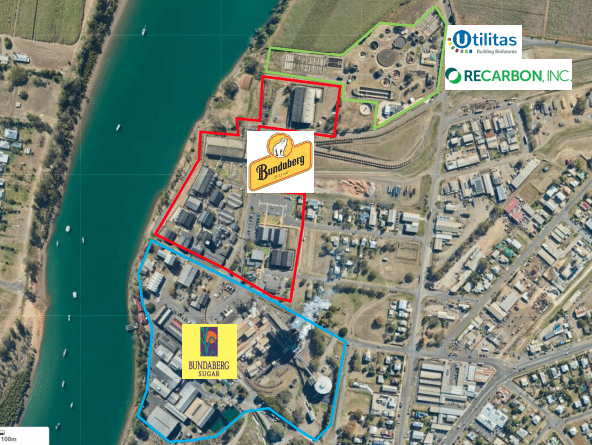
Bundaberg Regional Council
In October 2020, Bundaberg opened a bioHub the city’s disused wastewater plant, a nine acre plot just across the way from Bundaberg Sugar and Bundaberg Rum’s facilities. The plant already features biodigesters which are processing the city’s agricultural waste (of which, there is literally tonnes – an estimated 25% of agricultural products rot on the farms). Bundaberg is keen to diversify its economy, but its doing so by using its agricultural origins as a springboard.
The bioHub’s next step and biggest opportunity will come in the form of green hydrogen production. Utilitas runs the site’s biodigesters and it has teamed up with California-based technology company ReCarbon. Together the pair are looking to produce 200kg of green hydrogen from the bioHub by 2021, before scaling up to a tonne daily. The question is, who is going to take that hydrogen so soon, especially given that the fuel’s transportation and storage put fairly hard edges on uptake.
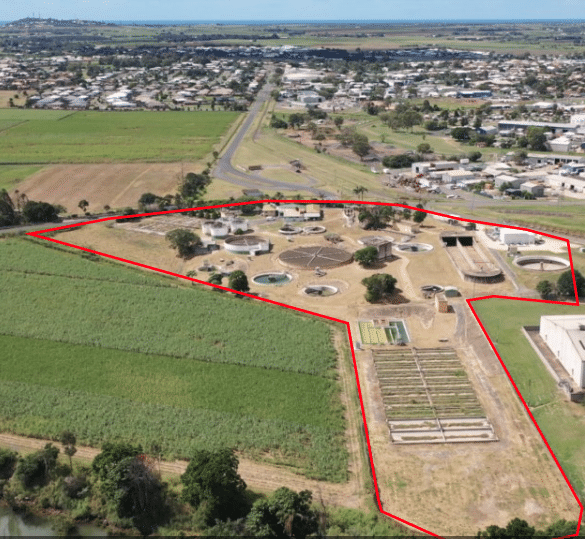
Bundaberg Regional Council
This is where the Bundaberg Regional Council comes in, though not just as necessary deep-pocketed supporters, but co-creators. In February, the council facilitated its first Bundaberg Bio-Hydrogen Technology Cluster. From that event, a partnership between the government’s local waste truck supplier, Superior Pak, and Singapore-based Hyzon Motors was born. While Hyzon is headquartered overseas, its CEO and co-founder, Craig Knight, is Australian and has been paying attention to the oft-overlooked Australian market for fuel cell technology. After being introduced at the Bundaberg event, Hyzon and Superior Pak entered into a commercial arrangement to create hydrogen-powered garbage trucks. Hyzon will provide drive train and fuel cell technology and Superior Pak will deliver the rubbish collection element of the truck.
But what have garbage trucks got to do with the bioHub? In short, the Council are the glue sticking these two plans together. It’s planning to lease the fuel-cell garbage trucks being manufactured by Hyzon and Superior Pak for its own fleet, stepping up to pay what it acknowledges is a green premium to get the technology off the ground.
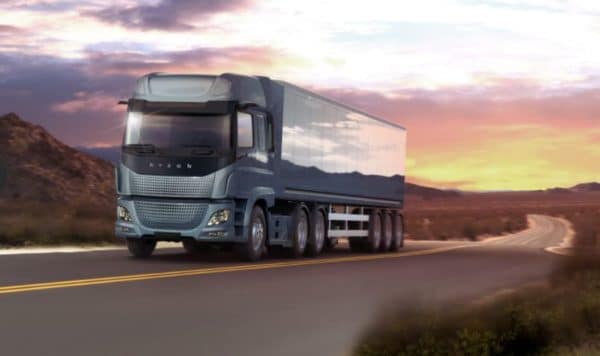
Image: Hyzon
With that settled, the council suddenly has a need for hydrogen, entering into a two-year offtake agreement with Utilitas and ReCarbon at the Bundaberg bioHub and guaranteeing a minimum purchase amount with the hub for two years. Not only does this offtake agreement financially kickstart the green hydrogen production element of the bioHub, it means Bundaberg will have a refuelling station, crucial piece of infrastructure enabling future growth.
“We’ve identified within the region, the key to getting that actually happening is having a refuelling station. People can invest in the vehicles but you need is the refuelling station – that’s an important piece of infrastructure,” Emily Murray, Bundaberg Council’s Industry and Investment Advisor and Artup’s green energy co-conspirator, told pv magazine Australia. “That then enables other industry in the region who have their own emissions targets or social licensing things, that’s then there for them. They don’t have to go and organise for the refuelling infrastructure or work out the logistics because its all here ready.”

There’s an earnestness about Artup and Murray’s approach, which necessitates a degree of courage rare in government. That is, they don’t flinch away from the fact their vision will not easily realisable. “It’s going to take a lot of work, it’s going to be disruptive,” Artup says.
The council’s role as glue doesn’t just refer to its capital’s sticking power either. These projects and partnerships didn’t land in the region thanks to the grace of god. Before the town held its first hydrogen cluster meeting, a model which is being popularised across the country, the council actually convened 80 national and international delegates in 2020 for the stated purpose of exploring Bundaberg’s transition to a bio economy. The Bundaberg Bio Economy Conference, as it was aptly named, was organised in part by Artup and Murray through stunningly simple means: picking up the phone.
“We just google stuff and research it and then I say to Emily, ‘can you ring [the key people involved] and get them up here? Just think of a reason to invite them here and explain what we’re doing and just have a conversation?’” Artup says frankly.
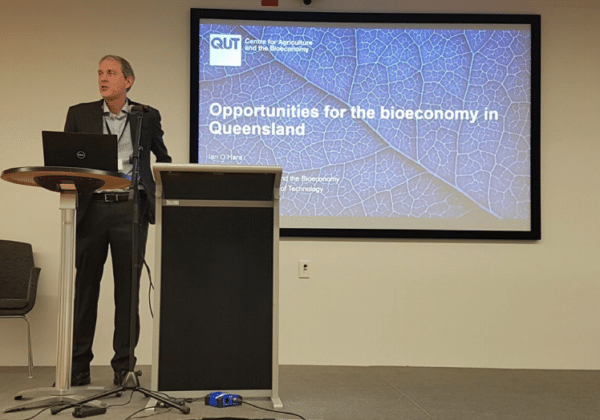
Bundaberg Regional Council
“From there it snowballs… we haven’t got to the boundaries yet where we’re not meeting someone new every single day,” Murray says. “We’re talking to these really high level technical hydrogen experts and then we’re connecting them… we’re the middle guys, we just work for local government – but it seems to be working.”
Indeed it does, the council’s magic phone has managed to reel in Professor Ian McKinnon, Queensland’s strategic hydrogen advisor and a professor at the Queensland University of Technology. Both Artup and Murray still seem to be in disbelief at his involvement and willingness to help build the region’s green hydrogen competency. For them, collaborating with not only industry but also academic institutions like the Queensland University of Technology and the Central Queensland University has helped them piece together both a viable vision and deep understanding of a complex energy ecosystem.
You couldn’t describe Artup as anything other than chuffed when he talks about the momentum that’s built around Bundaberg in the past year. “Industry will start talking about us without us being in the room, and that’s the best PR we can get,” he says.
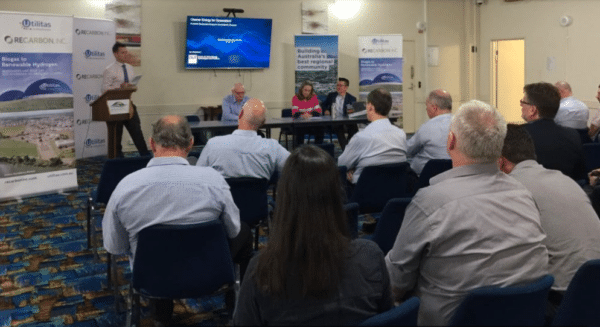
Bundaberg Regional Council
Artup, Murray and their colleagues, it turns out, are actually be building on another long tradition in Bundaberg: green energy solicitation. Ken Mathews has long been in the solar game – his company Clean Holdings is looking to develop a solar project in Bundaberg on 350 hectares of Bundaberg Sugar’s land. “Bundaberg, we got involved there initially because the ex-mayor reached out to us,” Mathews told pv magazine Australia. He said he was invited up to Bundaberg, shown around and encouraged to scale up the ambition of the project – which is still getting land approval, a process which Mathews notes has actually been fast tracked by Queensland’s Cooordinator General. “When we went, [the project] was going to be a small example, but it grew very rapidly,” he said.
In an interview which veered into the philosophical, Andrew Horvath said he believes the primary job of government is to set conditions that maximise potential. The words stuck. It seems to me that Artup, Murray and presumably many of their colleagues in Bundaberg see their roles as just that. “It takes a vision,” Artup says.
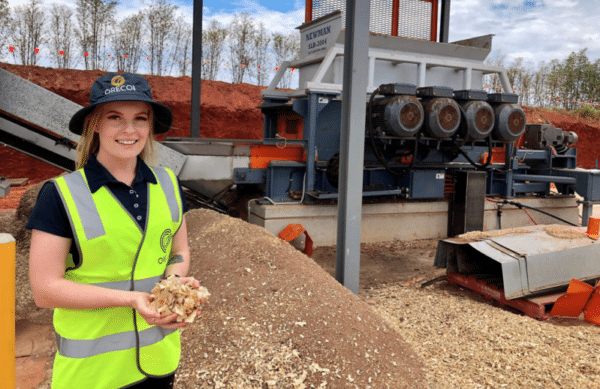
Bundaberg Regional Council
This content is protected by copyright and may not be reused. If you want to cooperate with us and would like to reuse some of our content, please contact: editors@pv-magazine.com.
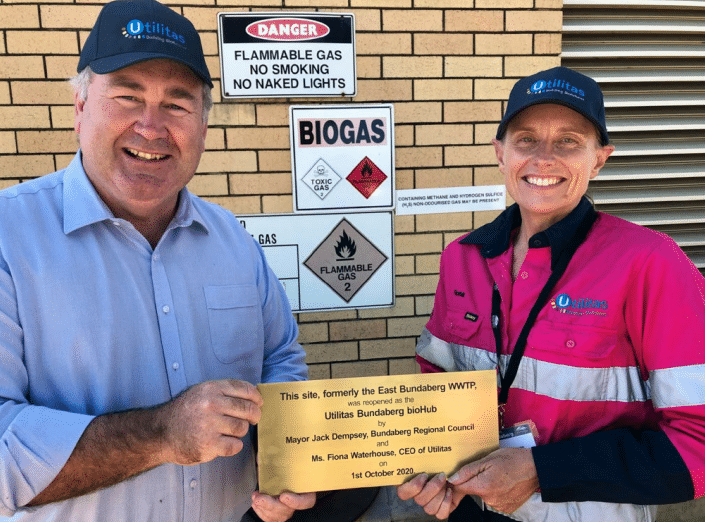








2 comments
By submitting this form you agree to pv magazine using your data for the purposes of publishing your comment.
Your personal data will only be disclosed or otherwise transmitted to third parties for the purposes of spam filtering or if this is necessary for technical maintenance of the website. Any other transfer to third parties will not take place unless this is justified on the basis of applicable data protection regulations or if pv magazine is legally obliged to do so.
You may revoke this consent at any time with effect for the future, in which case your personal data will be deleted immediately. Otherwise, your data will be deleted if pv magazine has processed your request or the purpose of data storage is fulfilled.
Further information on data privacy can be found in our Data Protection Policy.